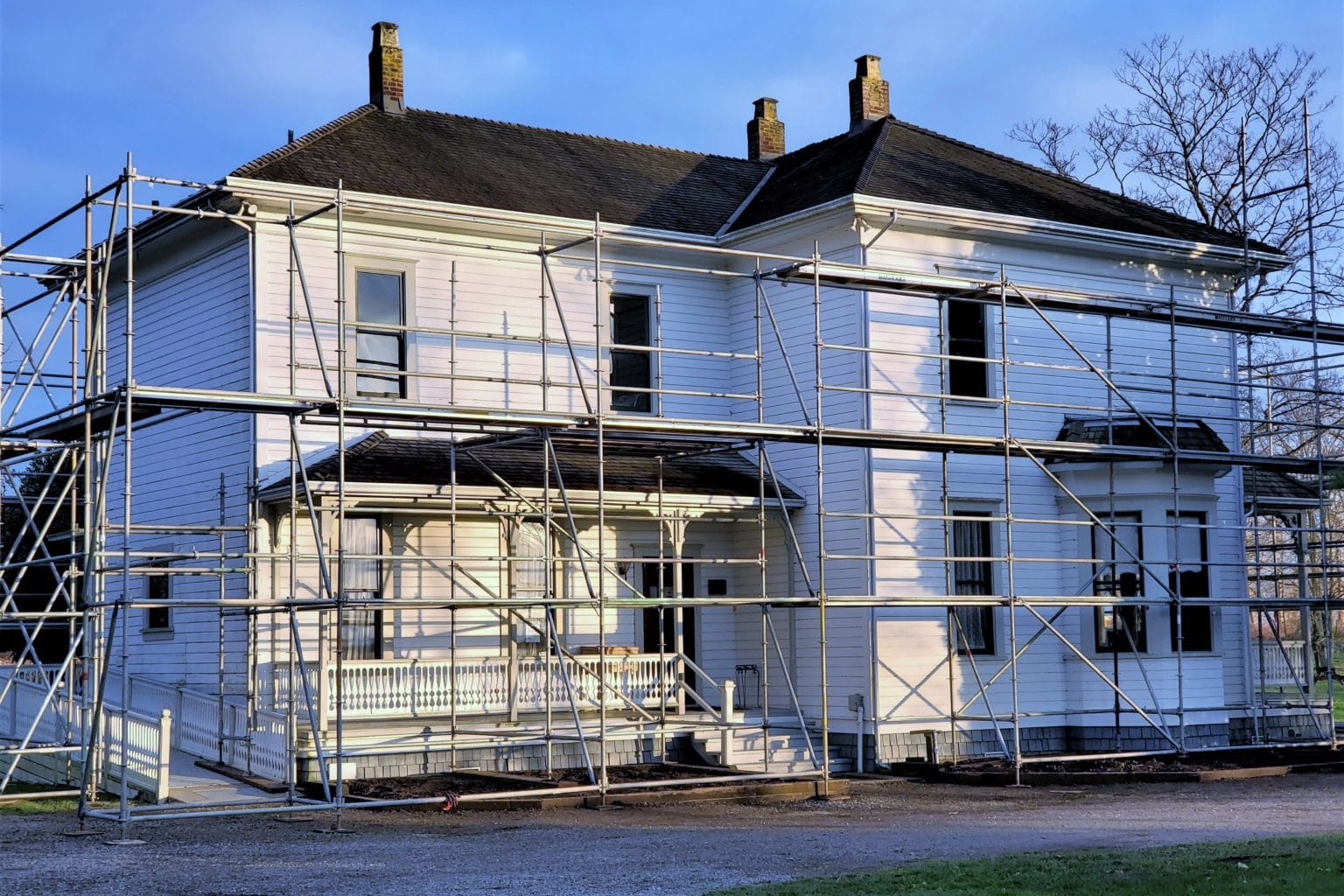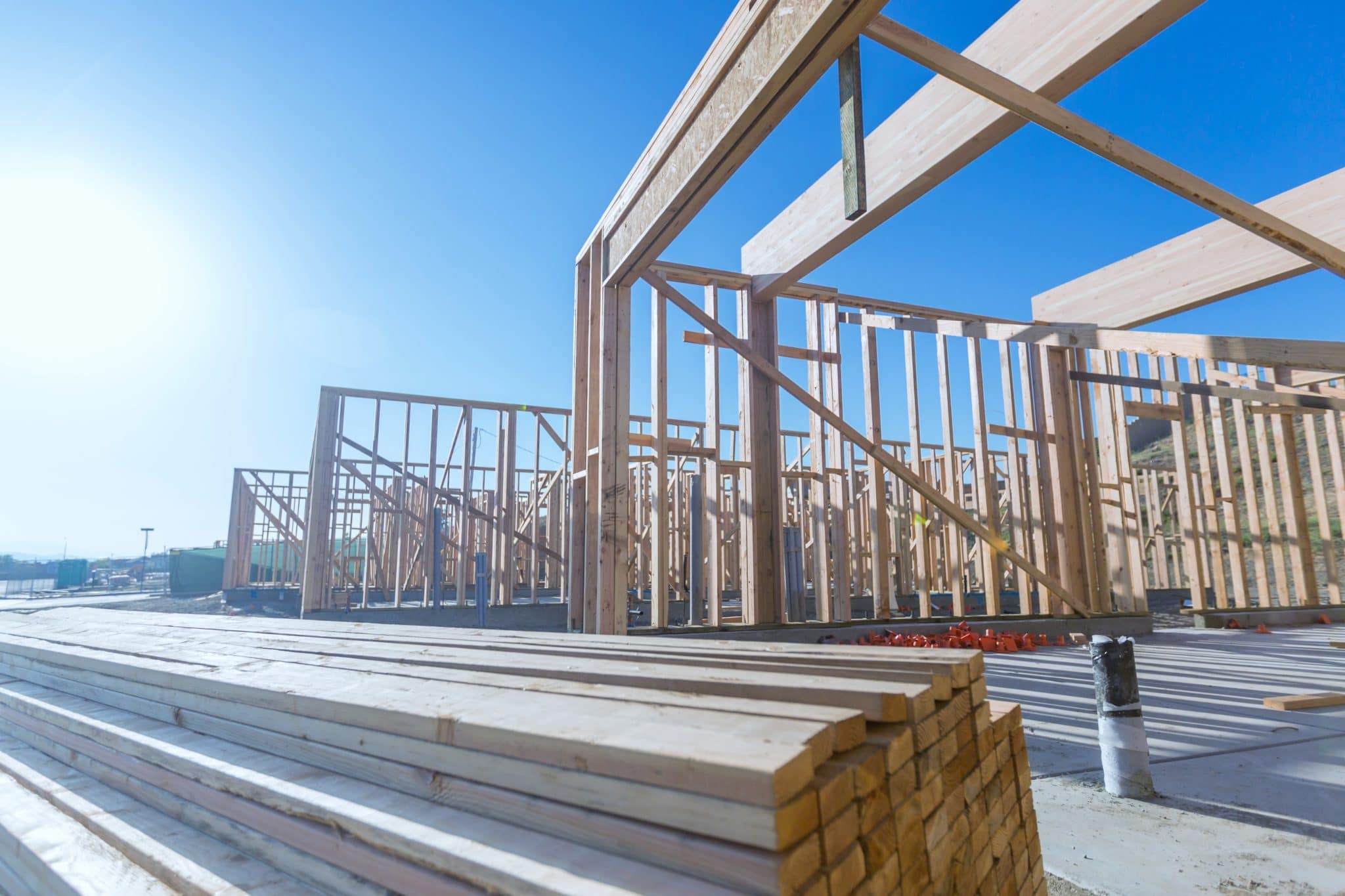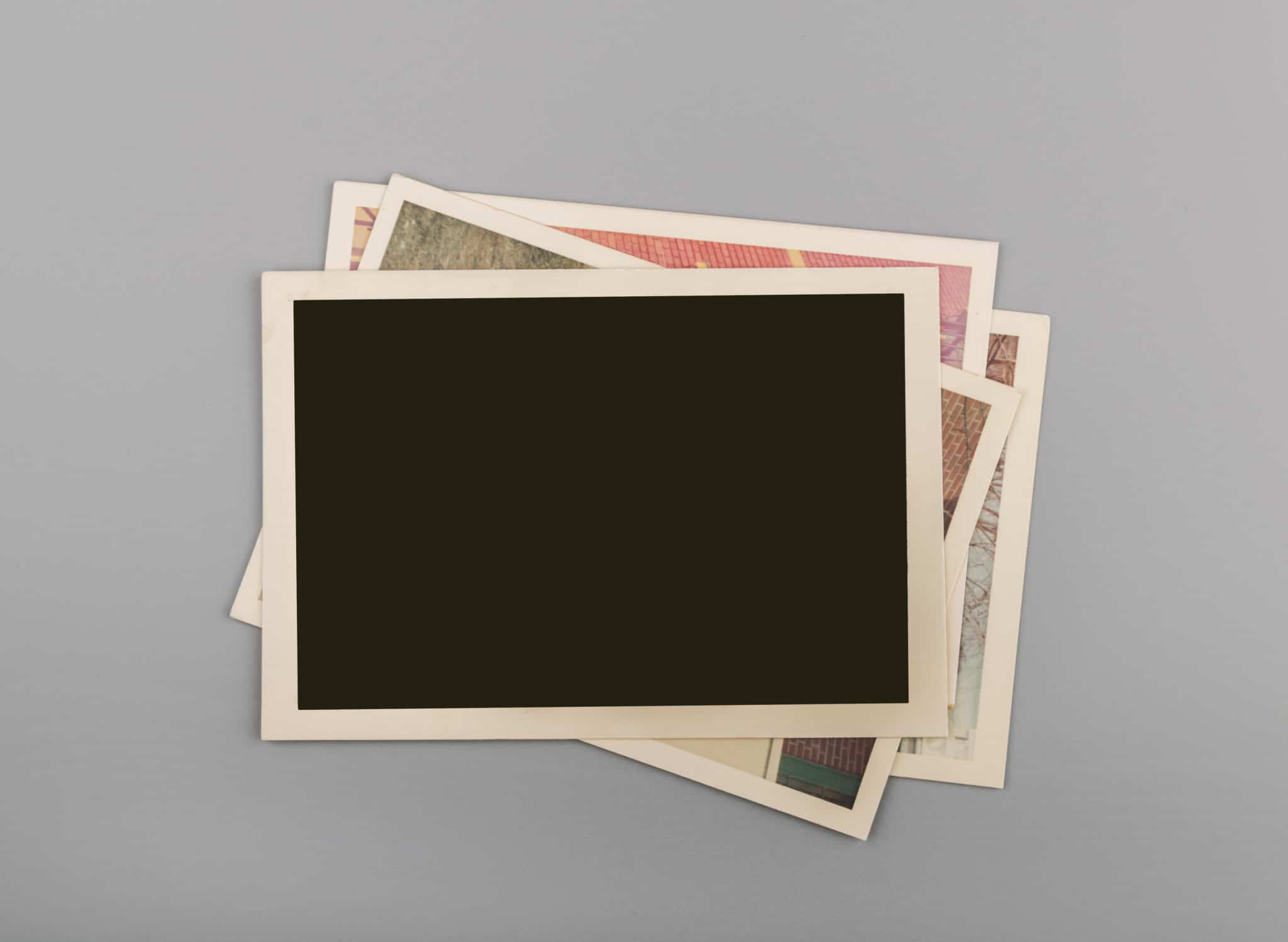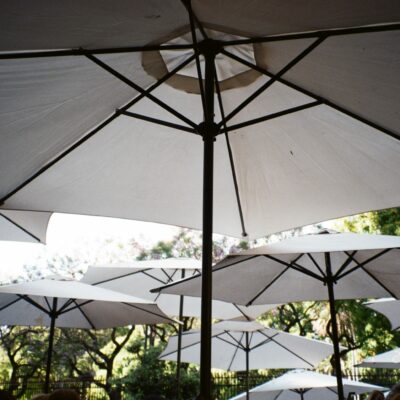Draw Inspections: What They Are and Why Inspectors Offer Them
Last Updated November 9, 2023

Although 2020 brought a 0.4% decline in construction industry revenue, 2021 is proving to be different. According to IBISWorld, revenue in the construction industry is projected to increase 5.2% in 2021 and continue to increase after. Where do home inspectors fit into the mix? Some have taken advantage of this growth to provide an additional service: draw inspections.
What are draw inspections?
Commonly confused with phase inspections or HUD or 203K inspections, draw inspections, also known as progress inspections or completion evaluations, verify the advancement of a construction project—residential or otherwise—for lenders. By cross-checking draw inspection reports against those of a contractor, banks can protect their investments. For example, when an inspector finishes a draw inspection, their report helps confirm that the contractor completed their work before the bank disperses funds or draws.
“The word ‘draw’ comes from the contractor being able to draw on a bank loan,” said Nick Gromicko, founder of the International Association of Certified Home Inspectors (InterNACHI).
 During draw inspections, inspectors detail the:
During draw inspections, inspectors detail the:
- amount of work completed for each project line item,
- percentage of necessary materials on site, and
- evidence of observations via photos and reports.
Unlike a standard home inspection, draw inspections are not for finding defects. Bruce Barker, 2021 President of the American Society of Home Inspectors (ASHI), explains:
“You are working for the lender and your job is basically [to say] ‘yes’ or ‘no.’ Is this component there? Yes or no? You have nothing to do with how well it was installed, what the engineering is, or even if they have the right component. That’s not your job.”
Why do inspectors offer them?
When asked why they offer draw inspections, the home inspectors we interviewed gave the following reasons.
1. They wanted another source of revenue.
The most common reason our interviewees started performing draw inspections was for additional revenue.
“I started doing [draw] inspections about a year ago to add a second stream of income,” said Timothy Thrasher from Centsable Inspections in Alabama.
During the market downturn of 2009, Steve Jenicek of TaskMaster Home Inspections in Montana saw draw inspections as an opportunity to diversify his business.
“I got aligned with large banks [during the decline] and then continued on after things started picking up,” Jenicek said.
2. They wanted to provide an additional service.
When Chuck Lambert from Sunrise Inspection Services in California started draw inspections 20 years ago, he saw an opportunity to expand his skillset and offer something new.
Other inspectors, like Ron Greene from Golden Eagle Home Services, LLC in Washington, found that draw inspections suited their businesses as an additional service.
“[Draw inspections] fit with the rest of my inspection services,” Greene said. “It made sense to include them.”
3. They already had experience in the construction industry.
Although they share some similarities, the construction and home inspection industries have their differences. Some of our interviewees found that draw inspections were a good fit for their business because they already had experience in construction.
“I spent 20 years in the commercial construction industry before becoming a home inspector,” said Gordon Glidden from Inland Lakes Inspection Services in Michigan. “[Draw inspections] were a good fit for me.”
 Investments inspectors make
Investments inspectors make
While you don’t need official licensure to offer draw inspections in most states, lenders may ask about your qualifications before hiring you. The inspectors we interviewed had certifications through national and state associations. Check your state and local regulations to make sure you keep in compliance.
Since draw inspections are performed on residential and commercial construction projects, the inspectors we interviewed invested time in learning about commercial properties.
“The skills that are required for a single residence structure also apply to a commercial with some additional requirements, like: ADA compliance, fire suppression systems, elevators, and other systems you wouldn’t find in a residence,” Green said. “I took an online course on commercial inspections, but most of my commercial construction knowledge was gained knowledge over the years.”
For inspectors who don’t have a background in construction, Bobby Skinner, a full-time draw inspector from Complete Lender Services in Tennessee, recommends finding a mentor to take new inspectors on ride-alongs. Often, new inspectors have difficulty finding a local inspector willing to show a potential competitor the ropes. Skinner further explains that home inspectors looking to offer draw inspections may have more luck in shadowing full-time draw inspectors, like him, rather than other home inspectors offering draw inspections as an additional service.
Most of the inspectors we interviewed are contacted by lenders for their draw inspections. However, some choose to network with local banks to get draw jobs.
“When I first started, I was knocking on bank doors a lot,” Skinner said. “[I was] talking to loan officers and building my reputation. Now, I mostly get word-of-mouth referrals. Still, I visit local banks I don’t work with twice a year to get their business.”
Limiting your liability against claims
Without any standards of practice outlining draw inspections’ scope, it can be difficult for inspectors to know how to limit their liability. Our claims team and interviewees cited the following ways to manage risk on draw inspections.
Advocate for yourself.
Not all risk management is about avoiding claims. It’s about defending your worth by ensuring fair payment, too. The inspectors we interviewed supported advocation for prompt and proper payment for draw inspections.
“One company I worked for offered $75 [per draw inspection],” Lambert said. “I countered with $125 and got it. Sometimes you can barter with them, sometimes they’ve already got a preset fee.”
Unlike standard residential inspections, draw inspectors get paid after-the-fact. For this reason, Greene recommends inspectors set clear terms with lenders.
“When does the inspector get paid? 15 days, 30 days, 45 days?” Greene said. “[Inspectors] need to know this before performing draws. And the inspector should require payment before performing another one [for the lender].”
Have an agreement and get it signed.
Even when you do multiple draw inspections for the same institution, you still need to obtain a signed agreement with that institution. Most home inspector insurance providers require signed contracts to provide coverage for related claims. Furthermore, agreements are your primary protection when claims do arise.
However, unlike with typical residential inspections, which require a separate contract for each property you inspect, your insurance provider may allow you to obtain one “master” agreement with the bank or financial institution for which you are providing draw inspections. This master agreement may include many of the provisions that characterize your standard pre-inspection agreement—like a limitation of liability and a notice requirement—but caters to multiple limited inspections. To find out if your insurance provider accepts master agreements for draw inspections, contact them directly.
Don’t assess work quality.
Perhaps the biggest pitfall of draw inspections is when inspectors assess the quality of work done on site. As an inspector, you are not required to assess workmanship. Even if you receive pressure from a lender to do so, it is not in your best interest. Once you start making workmanship determinations, you become liable for a contractor’s mistakes. Shmuel Steinberg from our claims team explains:
“[Contractors] are primarily responsible for the deficiencies in their own work,” Steinberg said. “By definition, an inspector is not responsible for latent defects.”
Don’t accept liability for someone else’s mistakes. Stick to confirming line items and site materials, reinforced by clear photos.
Know code, but don’t cite it.
Almost all of the inspectors we interviewed recommended that inspectors hoping to offer draw inspections should have a strong knowledge of code. According to Lambert, code can be a helpful guide in your visual observations.
“You don’t call out code, but 99% of your information comes from code,” Lambert said. “You have to know what you’re doing and look for.”
Gromicko agrees.
“We have a course on basic construction codes,” Gromicko said. “That’s very useful [for] a draw inspection.”
However, when you aren’t performing a code inspection, don’t cite code in your report. Although it may be tempting, citing code opens you up to additional, and unnecessary, risk. Code compliance is the responsibility of code and building inspectors. If you cite code in your report, you go beyond the scope of your draw inspection. And, if you happen to cite incorrect code, you can be held liable for an issue you didn’t have responsibility for.
 Take LOTS of pictures.
Take LOTS of pictures.
Skinner started taking pictures on his draw inspections to avoid disputes with contractors.
“I take a lot of pictures on my inspections. It’s to verify work completed,” Skinner said. “There were contractors who weren’t being honest, saying there was more work done than there was. I started taking pictures to prove it because it was my word against theirs.”
As one of the main aspects of a draw inspection, photos are particularly important for lenders’ reference. They also provide proof that you conducted a thorough inspection should a claim arise.
From a risk management perspective, photos can prove what was there on the day of the inspection—and what wasn’t. Take clear photos of the line items you check. The more photos you take, the more equipped you are to dismiss a frivolous claim.
Draw inspections and your home inspection business
Do you already have experience in the construction industry? Is there an increased number of construction projects in your region? Do you want an additional source of revenue for your inspection business?
If you answered “yes” to any of these questions, perhaps it’s time for your company to offer draw inspections.
At InspectorPro, our standard home inspection insurance policy includes draw inspections. However, if you aren’t insured with us, you may not have coverage. Check with your insurance provider to see if you need an endorsement for these inspections. That way, you’ll have protection from claims should they arise—even if they are frivolous.
Insured with us and interested in offering draw inspections? Contact us.
Not insured with us but interested in our program? Apply for a free, no-obligation quote.





